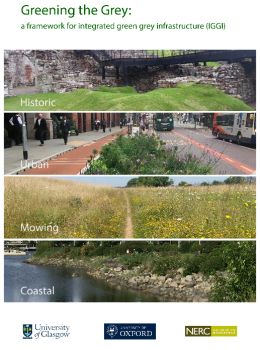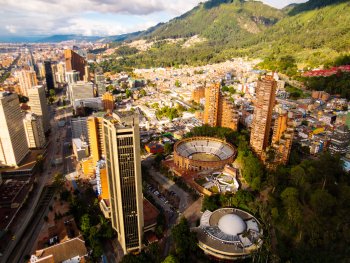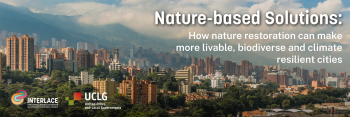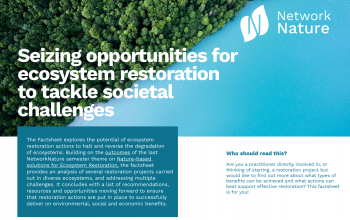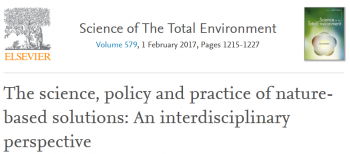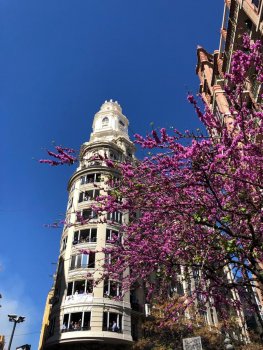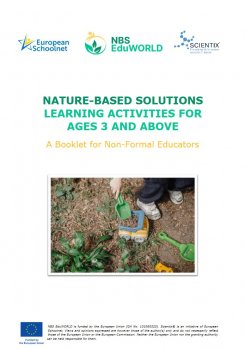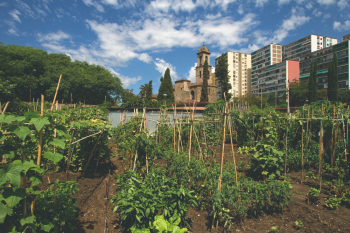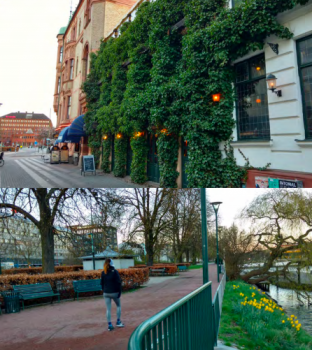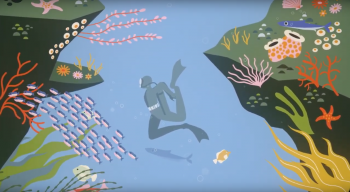Greening the Grey: A framework for integrated green grey infrastructure.
The University of Glasgow (with Oxford University and NERC) have created a Framework for green-grey infrastructure. The IGGI report includes16 detailed case studies and 30 vignette examples of costed, innovative real world exemplars where "green" habitat has been included in grey
INTERLACE report on implemented engagement programmes
The INTERLACE project has been proactive in targeting citizens as part of its objective to increase public awareness and understanding of urban ecosystem restoration and the importance of nature in cities more generally. This objective has been delivered via a Citizen Engagement Programme, which
D5.1: Report on comparative analysis of economic valuation models
Findings are presented from an investigation of nature-based solutions (NBS) research and case studies examining how projects address ‘co-benefits’, and particularly, their coverage of economic impacts.
INTERLACE MOOC on Nature-based Solutions: (1) INTRODUCTION to urban nature-based solutions as a tool to address global challenges.
Urban areas across the globe are facing unprecedented challenges—pollution, climate change, urban sprawl—and traditional solutions are falling short. The INTERLACE project’s Massive Open Online Course showcases how nature-based solutions offer a promising approach to help create resilient,
Technical Guidance on Comprehensive Risk Assessment and Planning in the Context of Climate Change
The Technical Guidance on Comprehensive Risk Assessment and Planning in the Context of Climate Change provides orientation on how risks in the context of climate change can be comprehensively and systemically addressed through risk assessment. Decision-making, planning, and integrating
NetworkNature Factsheet: Seizing opportunities for ecosystem restoration to tackle societal challenges
This factsheet explores the potential of ecosystem restoration actions to halt and reverse the degradation of ecosystems. Building on the outcomes of the last NetworkNature semester theme on Nature-based solutions for Ecosystem Restoration, the factsheet provides an analysis of several restoration
The science, policy and practice of nature-based solutions: An interdisciplinary perspective
In this paper, they reflect on the implications for science, policy and practice of the recently introduced concept of Nature-Based Solutions (NbS), with a focus on the European context. First, they analyse NbS in relation to similar concepts, and reflect on its relationship to sustainability as an
Capturing the Values and Making the Business Case for Nature-Based Solutions - a step by step guide
This guide is designed to facilitate Nature based solutions adoption in urban areas by leveraging the economic value and countless benefits (also referred as ‘’non-monetary values’’) NBS have on communities and ecosystems. By providing step-by-step instructions and tools for capturing and
Climate change in 12 pictures
This colourful and illustrative brochure was developed within the IUCN's initiative ADAPT: Nature-based Solutions (NbS) for resilient communities in Western Balkans. It represents a short guide through the climate change consequences showcasing possible solutions to climate change adaptation
Terms of Reference for Urban Well-being Labs and associated local task forces in each of the cultivating cities
This ToR document refers to the intended development of Urban Well-Being Labs and the further establishment of a Local Task Force in each of the six participating cities. In the context of this ToR document, a focus is placed on the following key factors: • Listing of all definitions of
- Document
Group Certification for Sustainable Forest Management: Promoting Shared Forest Management and Ecosystem Services Enhancement
This certification is proof of the possibility of overcoming territorial fragmentation for a common objective by uniting public and private forces.
Greenopolis: Educational platform about sustainable urban development, climate challenges and NbS
A learning platform about healthy and liveable cities. Your nature guide, e-Boti, introduces you to urban development, climate challenges, and nature-based solutions.
Nature-based Solutions Learning Activities for Ages 3 and Above
This set of Learning activities is designed to help educators, instructors and trainers in Youth Centers, Youth Camps, NBS and/or STEM Camps and other forms of non-formal instruction, bring the topic of nature-based solutions (NBS) to children and youth across Europe through structured and
Conexus Life-Lab factsheet series - Urban Agriculture Observatory: Social and Ecosystem services
The Urban Agriculture Observatory is a partnership aiming to establish a database of environmental and social aspects of urban allotments and their benefits. Based on the database, a public web platform is created to share collected data and bring urban agriculture closer to citizens. It is
Nature-based solutions to climate change mitigation and adaptation in urban areas
This report summarises much of the work done by the German Federal Agency of Nature Conservation (BfN) in cooperation with the Helmholtz Centre for Environmental Research-UFZ and the German Centre for Integrative Biodiversity Research (iDiv) in the frame of a research and development project on
- Document
Carbon accounting for PES
The economic aspect of sustainable forest management is crucial for preserving rural areas, highlighting the need to develop methods for quantifying its ecosystem services.
On the need for a multi-dimensional framework to measure accessibility to urban green
With the recent expansion of urban greening interventions, the definition of spatial indicators to measure the provision of urban greenery has become pivotal in informing the policy-design process. By analyzing the stability of the population and area rankings induced by several indicators of green
Nature-based solutions for creating circular cities Course
This course provides knowledge on how to create such cities by using nature-based solutions (nbs). It comprises knowledge on resources flows and management of these flows in cities, appropriate nature- based solutions for managing resources, implementation aspects and number of worked examples to
How opportunistic mobile monitoring can enhance air quality assessment?
The deteriorating air quality in urban areas, particularly in developing countries, has led to increased attention being paid to the issue. Daily reports of air pollution are essential to effectively manage public health risks. Pollution estimation has become crucial to expanding spatial and
The BUFFER project - how research allowed classifying Marine Protected Areas for better clarity in the sustainable use of natural resources and conservation of biodiversity
The BUFFER project has been awarded the second edition of the BiodivERsA Prize for Excellence and Impact, highlighting its excellent achievements in terms of advancing science and practice of biodiversity and ecosystem services. The project was funded under the 2011-12 BiodivERsA joint call on “
- ‹ previous
- 12 of 20
- next ›

